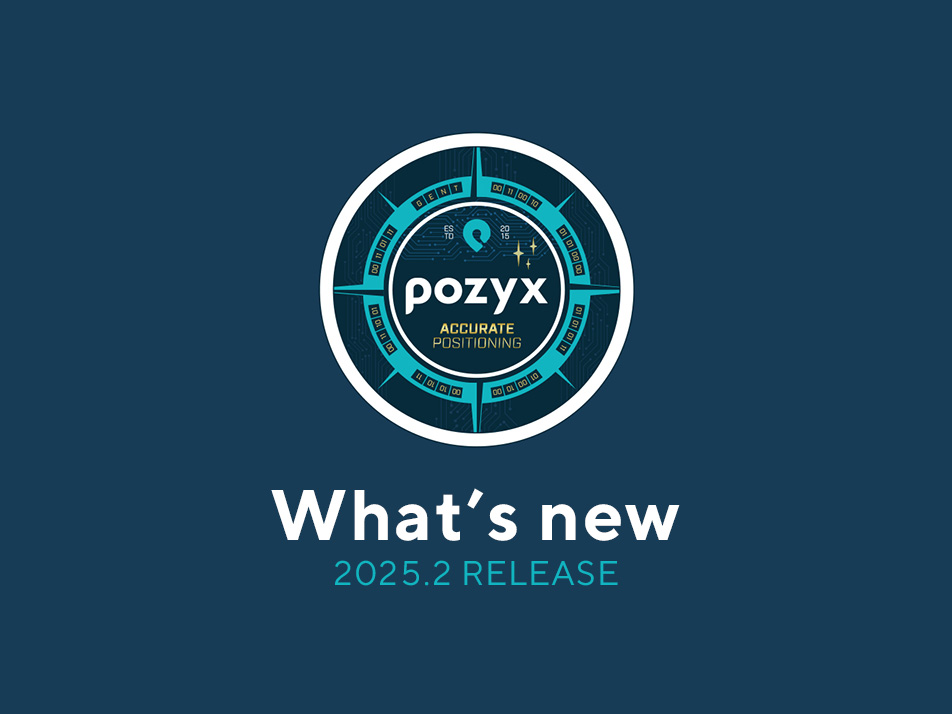Validation & Report Tool
Pozyx has added a new toolset to its RTLS software suite, the RTLS Validation Tool & Validation Report.
As the name suggests, the tool uses advanced signal processing and AI to determine and validate the accuracy, completeness, and performance of Pozyx deployments after the initial installation of the infrastructure.
The Validation & Report Tool is ideally suited to keep all involved parties informed on the status, health, and performance of the Pozyx RTLS solution. It will be used by integration or installation partners as well as end customers and their process engineers or quality departments every time a thorough understanding and insights on the system and its infrastructure performance stats are required, during installation, but also during every next stage of the RTLS project. The validation report grants a high level of confidence that every part of the Pozyx RTLS works as expected.
Discover the Pozyx Platform
The Pozyx Platform brings indoor and outdoor positioning data together to provide full asset visibility, automation and location-based insights for logistics and manufacturing.
Pozyx Platform3 step RTLS installation validation
The Validation Tool for the set-up and installation of the Pozyx RTLS system is part of a 3-step exercise:
1. The Planning phase during which floorplans are uploaded and zones (digital geo-fences) are created
2. The Rollout during which network validation, network topology, anchor connectivity and their coordinates are checked
3. The Validation of the installation with reporting functionalities

The activities in step 1 are covered by the Pozyx RTLS Planning Suite with its network planning tool and the anchor planning tool. To ensure that the deployment will work as expected, to validate the set-up and infrastructure installed, and to avoid errors before the go-live, Pozyx has developed the Validation Toolset, which consists of a Recordings module and a powerful Reports tool.

Validation Recordings
The Recordings Tool records the behavior of a selection of both stationary as well as moving assets in the Pozyx RTLS.
These data will populate the Validation Report with tag trajectories and to reflect the use and performance of tags in the floorplan.

Trajectories
Trajectories are plotted on the floorplan to validate if the tags are moving correctly on the floorplan.
Validation Report
Once the installation is completed, the anchors are in place, the network is rolled out and the tags are activated, the system can create a Validation Report that covers the status and performance of the following RTLS components and criteria:
• Acceptance criteria with detailed info on a.o. anchor density, coverage, accuracy, and positioning success rate
• Visualization of the recorded tag trajectories
• System settings & versioning
• Anchor list with exact coordinates
• Tags overview and mapping details
Indeed, this report can also be generated earlier in the process to provide insights on the installation status and which elements or components of the infrastructure still need attention. It can also be used to provide RTLS performance and health status checks or regular interval reports during every next stage after installation.


It is of paramount importance for a location system to work well and accurately but being able to maintain the accuracy over the years afterward is equally vital for obtaining reliable data.
For example, with WiFi-based fingerprint systems, the performance may deteriorate over time because obstacles move or change or because access points are moved without anyone knowing.
In BLE systems battery-powered beacons are typically put up with a simple adhesive. When they drop, they could remain on the floor or be placed elsewhere. Again, without anyone knowing or noticing.
With a UWB system, something may damage an anchor, or the layout of a plant can be changed, and users would want to make sure the RTLS continues to provide accurate information. Even though the Pozyx RTLS system already provides continuous diagnostic information about the health of the system, the validation tool gives a whole other level of detail and confidence that every component in the Pozyx RTLS works as expected, whenever a thorough understanding and insights into the system and its infrastructure performance metrics are required.











